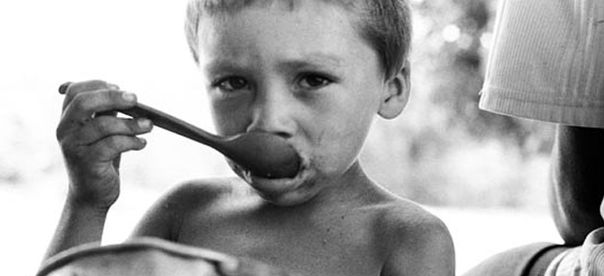the bittersweet flavour of Latin American poverty
The director of TROPA DE ELITE turns to the documentary form with GARAPA, an intense account of the lives of three family in a region stricken by famine.

GARAPA
As one of the hardest social phenomenons to tackle for any government, famine has always been a recurrent topic for documentary filmmakers in Latin America. GARAPA (2008) follows in this tradition, and has gained significant international recognition before being awarded the Best Film prize by FIPRESCI at the 25th Guadalajara Film Festival.
Following the success of his previous effort in social dissection of life in the favelas, the acclaimed fiction work TROPA DE ELITE (2007), author and director Jose Padilla now presents a visual essay focusing on the drama of three Brazilian families in the region of Vila Olha d’Agua. Although the plot is not exactly breaking new grounds in exposing social problems of peripherical segments in Latin American nations, the visual account of the daily routine of Rosa, Rosalina and Lucia works quite well as a narrative pivotal point, and at times seems to morph into an ethnographic registry. Eventually, the realism of the characters' suffering manages to steer the tone of the story towards cruder territory, exploring the human condition under extreme situations of misery.
One of the stylistic achievements of the documentary lies in the visual conceptualization through which the lives of these families are analyzed by a black and white mise en scene, aesthetically emphasizing the emotional rhythms the individuals move in. At the same time, the minimalistic presentation, underlined by the lightning and the lack of music, grants it an air of intimacy and emotional closeness. A feeling of despair is experienced on several occasions as Lucia is about to enter her house, walking down a dark tunnel with a faint light slowly appearing. In the form of a metaphor, the chiaroscuro of this scene reflects the two central aspects of the documentary. On the one hand, the relationship among the families, portrayed as a daily collective struggle to survive in a hostile world with a blurred male presence as the family support; on the other, the fragile effort of the government in solving the problem. Most outstanding is the indication that the characters are helpless and abandoned beyond the basic needs of food and hygiene; they do not have a visible trace of existential aspirations.
Padilla's documentary only hints at the degree of emotional involvement required to identify with the story; however, in this dialectic process, the images of Garapa speak loud and clear, and appear crowded with malnourished children, suffering mothers, streets with no names, broken families, inclemency of the weather, life's inequity and random injustice.


301 Moved Permanently